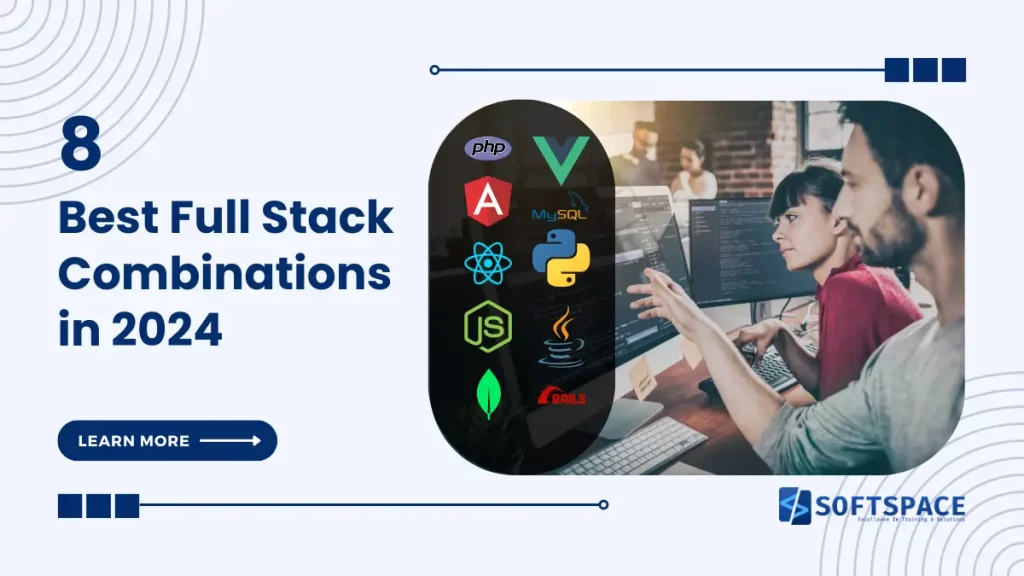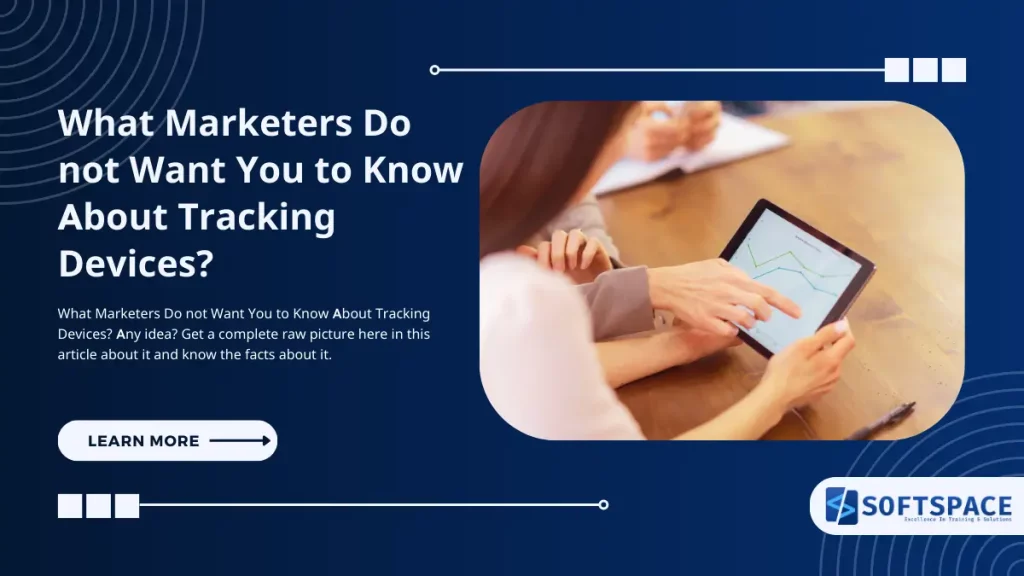In 2025, are you prepared to advance your career? Being ahead of the game and learning the winning full-stack combinations is crucial in the rapidly changing world of technology. In addition to improving your abilities, these potent and top-notch full-stack combinations will pave the way for unstoppable success.
This post will walk you through the best full stack combinations to concentrate on in 2025, regardless of your level of experience as a developer. The main technologies that will influence web and application development in the future will be examined, ranging from cutting-edge cloud-native solutions and contemporary frameworks like Next.js to AI-integrated stacks.
Putting in the time and effort to become proficient in these best full stack combinations will give you the adaptability and knowledge required to succeed in the cutthroat tech sector. As we reveal the keys to becoming an unstoppable force in the digital world, stay tuned. In 2025, prepare to embrace the full-stack revolution and clear the path to unheard-of success!
Table of Contents

Full Stack Development: What is it?
Web developers who are proficient in both front-end and back-end technologies are referred to as “full-stack developers”. This developer is capable of working with a website’s server and client sides.
Web Developer with Full Stack: A person with expertise in both front-end and back-end technologies is known as a “full-stack web developer”, or just “full-stack”. To put it another way, they are knowledgeable about every aspect of the application development process, from the presentation layer to the business logic.
🚀 Top 10 Full Stack Technologies 2025
🔥 Modern Development Stacks with Official Resources
| Technology Stack | Key Technologies | Difficulty | Popularity | Official Links |
|---|---|---|---|---|
|
Next.js Full Stack (T3 Stack)
Type-safe full-stack React framework
|
Intermediate |
|
||
|
MERN Stack (Enhanced 2025)
MongoDB, Express, React, Node.js with modern tooling
|
Beginner |
|
||
|
MEAN Stack (Modern Angular)
MongoDB, Express, Angular, Node.js
|
Intermediate |
|
||
|
Python AI-First Stack
FastAPI, SQLAlchemy, React, AI/ML integration
|
Intermediate |
|
||
|
Serverless Full Stack
AWS Lambda, DynamoDB, React, API Gateway
|
Advanced |
|
||
|
Rust WebAssembly Stack
Rust, WASM, Yew, Actix-web
|
Expert |
|
||
|
Blazor with ASP.NET Core
Microsoft’s C# full-stack solution
|
Intermediate |
|
||
|
Inertia.js + Vue/React + Laravel
Modern PHP full-stack without APIs
|
Intermediate |
|
||
|
Deno Fresh Stack
Modern Deno runtime with Fresh framework
|
Intermediate |
|
||
|
JAMstack with Headless CMS
JavaScript, APIs, and Markup with CMS
|
Beginner |
|
📋 Technology Legend:
Frontend Backend Database FrameworkBeginner Friendly Intermediate Level Advanced Skills Expert Level
How Can I Learn To Be A Full Stack Developer?
Although it’s a difficult path, it will ultimately be worthwhile. According to market trends, full-stack developers are the most in-demand developers on sites like HackerRank, with a high demand of 85% and an average salary of $110,000+ in 2025.
You must feel at ease using both frontend and backend technologies if you want to work as a full-stack developer. You should also be familiar with the fundamentals of server-side programming languages like Node.js, Python, or Go, as well as client-side programming languages like HTML5, CSS3, and JavaScript (ES6+), before selecting any of the top full-stack combinations.
In 2025, it is now crucial to comprehend cloud platforms (AWS, Azure, and Google Cloud) and AI/ML integration.
10 Best Full Stack Combinations for 2025
Full-stack applications can be created using a variety of frameworks and languages. Some, though, are more appropriate for particular kinds of projects than others. Research and experience are the best ways to find the one that best fits your needs. Let’s check the best full stack combinations available today with the modern languages:
1. Next.js Full Stack (T3 Stack)
Technologies: Tailwind CSS, Prisma, tRPC, NextAuth, Next.js 14, TypeScript
- With its App Router, Server Components, and Edge Functions, Next.js has developed into a comprehensive full-stack framework.
- With end-to-end type safety, the T3 stack exemplifies the contemporary method of full-stack development.
- The creation of static websites and server-side rendering are two advantages.
- Capabilities of edge computing
- Integrated middleware and API routes
- Outstanding TypeScript development experience; ideal for contemporary web applications that demand speed
2. MERN Stack (Enhanced 2025 Version)
Technologies: Node.js 20+, Express.js, React 18, and MongoDB
- The MERN stack is still widely used, but it now incorporates the improved performance of Node.js 20 along with React 18 features like Concurrent Rendering and Suspense.
Advantages:
- JavaScript everywhere strategy
- Robust community support
- Outstanding real-time applications
- Fantastic ecosystem and third-party libraries
- Scalable for businesses and startups
3. MEAN Stack (Modern Angular)
Technologies: Node.js, Express.js, Angular 17+, and MongoDB
- Modern Angular, combined with the MEAN stack, improves performance with signals, standalone components, and developer tools.
Advantages:
- Enterprise-level software
- Dependency injection, two-way data binding, and robust TypeScript integration
- Superb for extensive uses
4. Python AI-First Stack
Technologies: PostgreSQL, Redis, React/Vue.js, FastAPI/Django, and AI/ML Libraries
- The integration of AI and machine learning is the main focus of this combination, which is crucial for AI-driven applications in 2025.
Components:
- FastAPI
- React/Vue.js: Interactive frontend
- PostgreSQL: Sturdy relational database
- Redis: Caching and real-time features
- AI Libraries: TensorFlow, PyTorch, Hugging Face
5. Serverless Full Stack
Technologies: Edge Functions, Next.js/Nuxt.js, Supabase/Firebase, and Vercel/Netlify
- In 2025, serverless architecture will be essential due to its cost-effectiveness and automatic scaling.
Advantages:
- Pay-per-use pricing
- Automatic scaling
- Global edge deployment
- Zero server management
- Ideal for contemporary web applications
6. Rust WebAssembly Stack
Technologies: Tauri, React/Vue, WebAssembly, and Rust
- Rust with WebAssembly offers browser performance that is almost native for applications that are performance-sensitive.
Examples of Use:
- CPU-intensive calculations
- Web apps with high performance
- Tauri desktop applications
- Multimedia and gaming applications
7. Blazor with ASP.NET Core
Technologies: Blazor WebAssembly/Server, SQL Server/PostgreSQL, and ASP.NET Core 8
C# is used throughout the whole stack in Microsoft’s full-stack solution for enterprise applications.
Advantages:
- Full stack in a single language (C#)
- Enterprise-grade security
- Outstanding Visual Studio tooling
- Robust performance and scalability
- Excellent for commercial uses
8. Inertia.js + Vue/React + Laravel
Technologies: Tailwind CSS, Vue.js 3/React, Inertia.js, and Laravel 10+
- Modern JavaScript frontend frameworks are combined with the elegance of Laravel.
Advantages:
- Laravel development is quick, and Inertia.js provides a contemporary SPA experience
- A versatile frontend option
- Great for applications with a lot of content
9. Deno Fresh Stack
Technologies: Tailwind CSS, Deno, Fresh, and TypeScript
- A contemporary substitute for Node.js stacks is provided by Deno’s secure runtime with the Fresh framework.
Advantages:
- TypeScript support is built in
- Security is enabled by default
- Package.json and node_modules are not used
- Island architecture to improve performance
- Adherence to contemporary web standards
10. JAMstack with Headless CMS
Technologies: GraphQL, Headless CMS (Strapi, Contentful), Gatsby/Next.js/Nuxt
- Excellent performance and developer experience make it ideal for content-driven websites.
Advantages:
- Outstanding performance and SEO
- Adaptable content management
- Developer-friendly workflow
- Secure and scalable
- Excellent for blogs and marketing websites
Trends in Full Stack Development for 2025
1. Integration of AI and Machine Learning
- It is now expected of full-stack developers to incorporate AI capabilities into their applications.
- It is essential to comprehend machine learning workflows and APIs for AI services.
2. Edge Computing and CDN Applications
- These days, edge computing is used to improve performance; understanding edge functions and global content delivery is necessary.
3. Cloud-Native and Serverless Development
- Cloud-native development and serverless architectures are increasingly common approaches for scalable applications.
4. Integration of Low-Code/No-Code
- Rapid development is becoming more and more dependent on knowing how to extend and integrate with low-code platforms.
5. Increased Attention to Security
- Zero-trust architectures and security-first development methodologies are crucial in light of growing cyber threats.
Key Competencies for 2025 Full Stack Developers
Technical Skills:
- Frontend: React 18+, Angular 17+, Vue 3, TypeScript, Tailwind CSS
- Backend: Node.js 20+, Python 3.11+, Go, Rust
- Databases: PostgreSQL, MongoDB, Redis, Vector databases
- Cloud Platforms: AWS, Azure, Google Cloud, Vercel, Supabase
- DevOps: Docker, Kubernetes, CI/CD pipelines, GitHub Actions
- AI/ML: API integration, fundamental ML concepts, vector embeddings
Soft Skills:
- Critical Thinking and Problem-Solving
- Collaboration and communication
- Project management
- A mindset of constant learning and security awareness
💻 Full Stack Developer Salaries in India
📊 Comprehensive Salary Data – Updated 2025
| 🏢 Company | 📍 Location | ⏳ Experience | 💰 Annual Salary (₹) |
|---|---|---|---|
| TCS | Bangalore | 0-2 years | ₹3.5 – ₹6 Lakhs |
| Infosys | Pune | 2-4 years | ₹6 – ₹9 Lakhs |
| Wipro | Hyderabad | 0-3 years | ₹4 – ₹7 Lakhs |
| Amazon | Bangalore | 3-5 years | ₹15 – ₹25 Lakhs |
| Bangalore | 4-6 years | ₹20 – ₹35 Lakhs | |
| Microsoft | Hyderabad | 3-6 years | ₹18 – ₹30 Lakhs |
| Accenture | Chennai | 2-4 years | ₹7 – ₹12 Lakhs |
| Cognizant | Bangalore | 1-4 years | ₹5 – ₹10 Lakhs |
| IBM | Pune | 3-5 years | ₹8 – ₹15 Lakhs |
| HCL Technologies | Noida | 2-5 years | ₹6 – ₹11 Lakhs |
| Capgemini | Mumbai | 2-4 years | ₹7 – ₹13 Lakhs |
| Tech Mahindra | Bangalore | 1-4 years | ₹5 – ₹9 Lakhs |
| Flipkart | Bangalore | 2-5 years | ₹12 – ₹22 Lakhs |
| Paytm | Noida | 2-4 years | ₹10 – ₹18 Lakhs |
| Zomato | Gurgaon | 2-5 years | ₹8 – ₹16 Lakhs |
| Swiggy | Bangalore | 2-4 years | ₹9 – ₹17 Lakhs |
| Byju’s | Bangalore | 1-3 years | ₹7 – ₹14 Lakhs |
| Ola | Bangalore | 2-4 years | ₹8 – ₹15 Lakhs |
| Freshworks | Chennai | 2-5 years | ₹10 – ₹18 Lakhs |
| Zoho | Chennai | 1-4 years | ₹6 – ₹12 Lakhs |
📋 Salary Range Legend:
Entry Level (0-2 years): ₹3-7L Mid Level (2-5 years): ₹5-18L Senior Level (3+ years): ₹12-35LExperience-Based Pay for Full Stack Developers (2025)
- Average salary: ₹12.5 Lakhs annually (range: ₹3.5 to ₹35 Lakhs)
- Freshmen: ₹4.5 Lakhs annually
- 5+ years experience: ₹18-25 Lakhs annually
- Senior (10+ years): ₹30-50+ Lakhs annually
Note: The size of the company, the location, and specialised skills (such as cloud knowledge or AI/ML) all have a significant impact on salaries.
Selecting the Proper And Best Full Stack Combination for 2025
Choose the perfect tech stack for your project
🌟 For MVPs and Startups
MERN Stack
JavaScript everywhere approach with modern React features and enhanced Node.js performance.
MEAN Stack
Enterprise-grade solution with TypeScript integration and powerful Angular features.
Next.js T3 Stack
Modern full-stack framework with end-to-end type safety and exceptional developer experience.
Serverless Solutions
Zero server management with automatic scaling and global edge deployment.
🏢 For Business Applications
Python Django + React
Robust backend framework with modern React frontend for data-heavy applications.
Java Spring Boot + Angular
Enterprise-grade Java backend with powerful Angular frontend for complex business logic.
ASP.NET Core + Blazor
Microsoft’s full-stack solution with C# across the entire application stack.
🤖 For AI/ML Projects
Python AI-First Stack
Complete AI-integrated stack with modern API framework and ML libraries.
Next.js + Python API
Modern frontend with powerful Python backend for AI integration and data processing.
Serverless AI Services
Scalable serverless architecture with integrated AI services and vector databases.
⚡ For Performance-Critical Applications
Rust + WebAssembly
Near-native performance with memory safety for computationally intensive applications.
Go + React
High-performance backend with excellent concurrency and fast compilation.
Next.js Edge Functions
Global edge computing with ultra-low latency and automatic geographical distribution.
Wrap-up
To sum up, the secret to achieving unstoppable success in 2025 and beyond is learning the winning full-stack combinations. With AI integration, serverless architectures, and edge computing emerging as critical competencies, the landscape has changed dramatically.
There is a greater need than ever for full-stack developers, and mastering contemporary frameworks, cloud computing, and AI integration will enable you to manage every facet of development and produce outstanding user experiences. Working on cutting-edge projects, earning competitive pay, and having limitless opportunities for career advancement are all benefits of full-stack development.
With new technologies like WebAssembly, edge computing, and AI opening up new possibilities, the future of full-stack development appears to be extremely bright. You’ll be prepared to succeed in this fast-paced industry by keeping up with the most recent developments and consistently learning these cutting-edge full-stack combinations.
To achieve unmatched success in 2025 and beyond, embrace the full-stack revolution!

13+ Yrs Experienced Career Counsellor & Skill Development Trainer | Educator | Digital & Content Strategist. Helping freshers and graduates make sound career choices through practical consultation. Guest faculty and Digital Marketing trainer working on building a skill development brand in Softspace Solutions. A passionate writer in core technical topics related to career growth.




